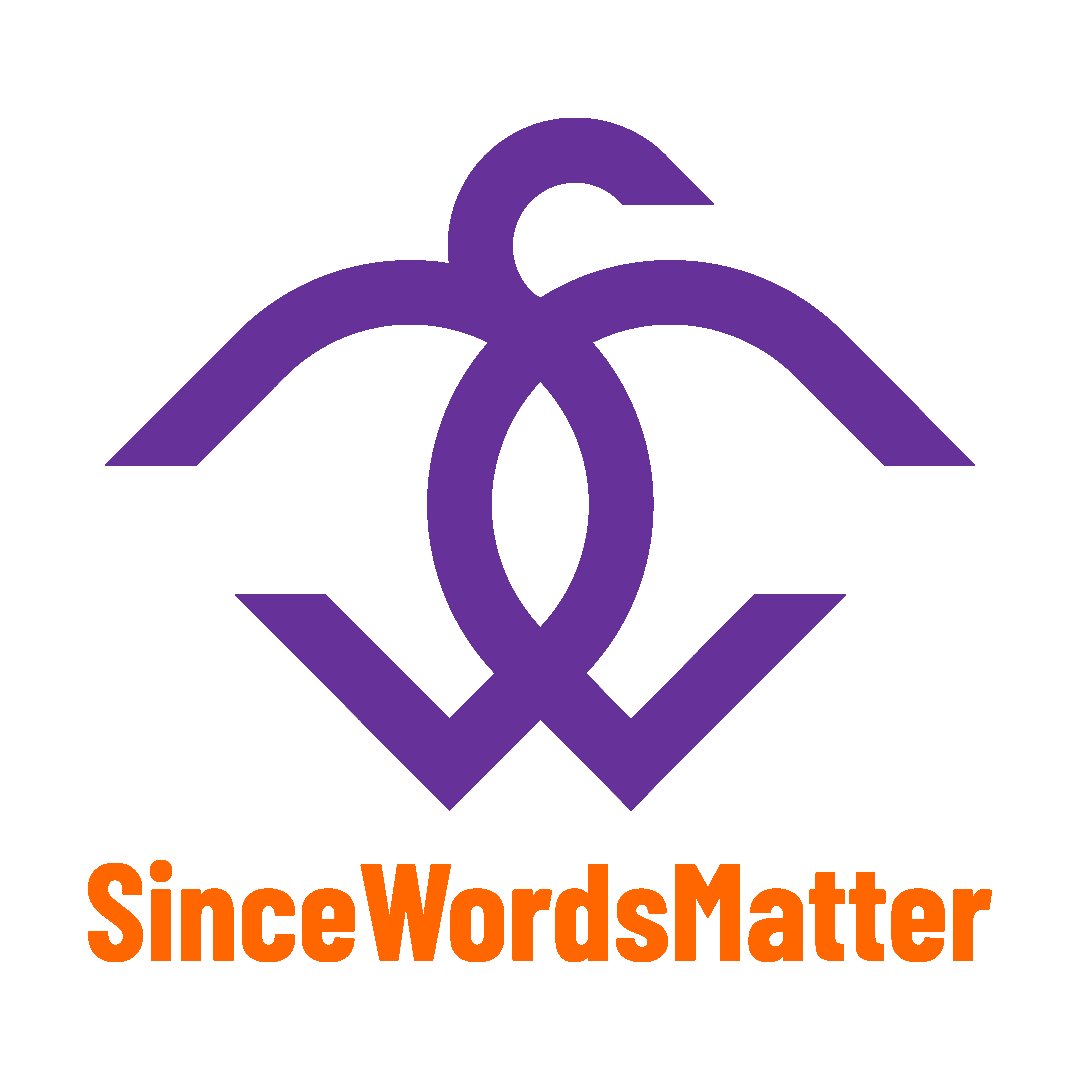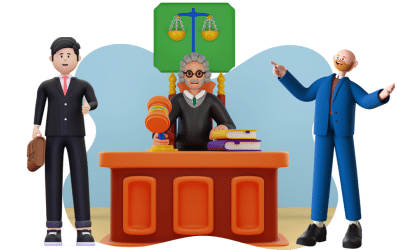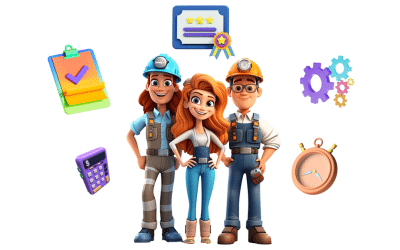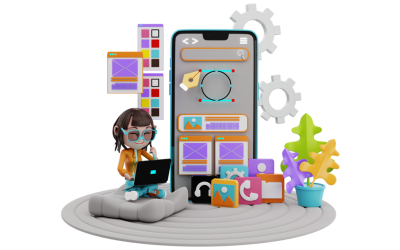Last Update on:
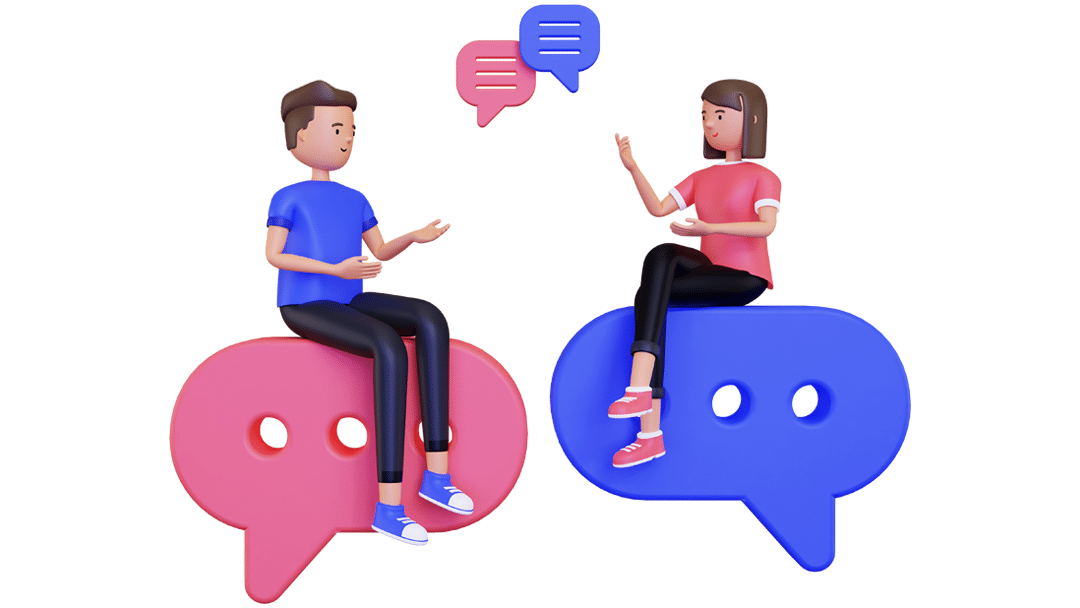
Have you ever wondered how people from all over the world can converse quickly and easily? The answer lies in the art of interpreting solutions. Interpreting acts as a bridge between people who speak various languages. It facilitates interaction, eliminates barriers, and increases comprehension. Interpreters are invaluable in all kinds of events, from business gatherings to political conventions, where a lack of a common language hampers communication.
Interpreting is more than just speaking another language. Cross-cultural communication necessitates an in-depth familiarity with other people’s languages, cultures, and traditions. Real-time translation of spoken or signed language from one language into another is known as interpreting. It is an essential tool for communication and understanding between individuals or groups that is required in various circumstances, from business conferences and medical consultations to political assemblies and international summits.
But did you know there is more than one kind of interpreting? Different aspects of interpreting allow for distinct categorization, each with advantages and disadvantages. In this blog post, we will go into the world of interpreting, look at the many interpreting types, and offer advice on when and where they are most effective. Understanding the many sorts of interpreting can help you communicate more effectively and establish stronger relationships with people of diverse language origins, whether you are a business professional, a traveler, or a member of an ethnic minority.
Mode and setting are the most frequent variables used to characterize interpretation. Depending on the mode, interpreting can be either simultaneous, consecutive, whispered, relay interpreting, or sight translation. It can be divided into conference, liaison, diplomatic, military, court and legal, educational, community, media, and travel interpreting based on the setting in which each mode can be utilized. It is worth noting that there is a specific kind of interpreting called sign language interpreting. It is used for translating spoken or written language into sign language, or vice versa, for individuals who are deaf or hard of hearing. But we won’t get into that here because it belongs to a different field.
Table of Contents
- What are the different types of interpreting?
- 1. Simultaneous Interpreting
- 2. Consecutive Interpreting
- 3. Whispered Interpreting
- 4. Relay Interpreting
- 5. Sight Translation
- 6. Conference Interpreting
- 7. Liaison Interpreting
- 8. Diplomatic Interpreting
- 9. Military Interpreting
- 10. Court and Legal Interpreting
- 11. Educational Interpreting
- 12. Community Interpreting
- 14. Travel Interpreting
What are the different types of interpreting?
Translating speech from one language to another is known as interpreting. It’s crucial because it allows people of different linguistic origins to interact with one another and share ideas and information. However, interpreting is not a one-size-fits-all solution. One can choose from a wide variety of interpreting types. Learning the distinctions between the various interpreting methods and their benefits and drawbacks will help you select the most appropriate one for your needs.
The most common kinds of interpreting are simultaneous interpreting, consecutive interpreting, whispered interpreting, conference interpreting, liaison interpreting, relay interpreting, sight translation, diplomatic interpreting, military interpreting, court and legal interpreting, educational interpreting, community interpreting, media interpreting, and travel interpreting.
1. Simultaneous Interpreting
In simultaneous interpreting, the interpreter listens to the source language and immediately interprets what was just spoken into the target language. This is performed in real-time, requiring extreme focus and quick thinking. Conferences, seminars, summits, and large-scale events where numerous attendees speak various languages are ideal settings for simultaneous interpreting. It is also suitable for situations where the speaker must swiftly and efficiently convey their message.
Advantages:
Allows for real-time interpretation
Can accommodate large groups of people
Reduces the need for pauses in communication and does not interrupt the flow of communication
Provides a more natural flow of conversation
Enables more efficient use of time during meetings or conferences
Can be less distracting than other forms of interpretation
Disadvantages:
Requires specialized equipment and technical expertise
Can be challenging for interpreters to maintain accuracy over extended periods
Can be expensive due to the need for equipment and multiple interpreters
May not be suitable for small or informal settings where a more personal touch is needed
2. Consecutive Interpreting
In consecutive interpretation, the interpreter takes notes as the speaker continues to talk. Once the speaker is done, the interpreter will relay their words into the target language. Consecutive interpreting is ideal for private interactions, such as interviews or one-on-one sessions, where the speaker and interpreter can develop a deeper connection. This is also especially helpful in formal settings like courtroom or hospital interpreting, when the interpreter may need to take notes and clear up any confusion.
Advantages:
Does not require specialized equipment or technical expertise
Allows for more personal interaction between speakers and interpreters
Provides time for speakers to pause, reflect between segments and clarify their message
Can be more effective for small, intimate gatherings and interviews
Allows for greater flexibility in terms of location and setting
Can be more cost-effective than simultaneous interpreting
Disadvantages:
Can be time-consuming, as it requires speakers to pause frequently
May result in a less natural flow of conversation, as the speaker must pause for the interpreter to translate the message
Can be challenging for interpreters to remember and accurately convey long segments of speech
May be less effective for large groups of people or fast-paced conversations
Can be more distracting for audience members who do not require the interpretation
May require additional time for interpretation, leading to longer meeting or conference durations
3. Whispered Interpreting
As a form of simultaneous interpreting, whispered interpreting (or chuchotage) is typically employed in contexts with a relatively small number of participants. The interpreter sits next to the listener and whispers the translation in real-time as the speaker speaks. When only one or two people in a small group need the translation, whispered interpreting is the most effective method. This method works very well when the speaker and the audience are in close proximity, as in a business meeting or a small group discussion.
Advantages:
Does not require specialized equipment or technical expertise
Provides a more personal touch than simultaneous interpreting
Can be effective for small, informal settings
Can be more cost-effective than simultaneous interpreting
Allows for immediate feedback and clarification between speakers
Can be less distracting for audience members who do not require interpretation
Disadvantages:
Requires a high level of concentration and skill to maintain concentration in a whisper
May not be suitable for large groups of people or fast-paced conversations
Can be challenging for interpreters to maintain accuracy over extended periods
Can be distracting for audience members who do not require the interpretation
Can be more challenging to hear and understand than other forms of interpretation
4. Relay Interpreting
For conversations involving more than two languages, relay interpretation is used. Relay interpreting involves first having the communication translated into a third shared language and then having that translation interpreted into the intended audience’s language. You should use relay interpreting if the available interpreters do not speak both the source and target languages. International conferences, trade shows and exhibitions, diplomatic events, academic conferences, and business meetings are just some of the many venues where relay interpreting can be useful.
Advantages:
Ideal for situations where there are three or more languages involved
Allows for communication between speakers of multiple languages
Can accommodate large groups of people
Provides a more natural flow of conversation than consecutive interpreting
Enables more efficient use of time during meetings or conferences
Can be less distracting than other forms of interpretation
Can be customized to meet the specific needs of the participants
Disadvantages:
Requires a high level of skill and expertise
May result in a longer delay in communication due to multiple interpreters
Can be challenging for interpreters to maintain accuracy over extended periods
Can be expensive due to the need for equipment and multiple interpreters
Can be more difficult to coordinate than other forms of interpretation
5. Sight Translation
The interpreting solution that involves the immediate oral translation of a written document from one language into another is known as sight translation. To perform sight translation, an interpreter first reads a paper written in one language, gains an understanding of its contents, and then orally translates its contents into another language for the target audience. Sight translation is most commonly employed in legal, medical, and other professional areas where written documents must be translated swiftly and properly. Excellent reading abilities and the ability to translate text fast and precisely are prerequisites for success in sight translation.
Advantages:
Ideal for legal and medical settings where documents need to be translated quickly and accurately
Does not require specialized equipment
Allows for effective communication of written documents in real-time
Can be used to translate technical documents or reports
Enables more efficient use of time than written translation
Can be less costly than a written translation
Can be customized to meet the specific needs of the participants
Provides an opportunity for immediate feedback and clarification
Disadvantages:
Can be challenging for interpreters to maintain accuracy, especially with complex or technical documents
May not be suitable for highly sensitive documents or legal materials
Can be time-consuming, especially with longer documents
May require additional time for interpretation, leading to longer meeting or conference durations
6. Conference Interpreting
Conference interpreting is a specialization of simultaneous interpreting used at large gatherings, including national and international conferences, summits, and meetings. When interpreting at a conference, the interpreter works in real-time, translating the speaker’s words as they are said. Conference interpreting necessitates a high level of competence and concentration, as well as the ability to operate in fast-paced and high-pressure situations. The ability to effectively portray complicated thoughts and concepts is essential for conference interpreters, especially when the speaker is talking quickly or using technical terminology.
Advantages:
Allows for effective communication between speakers of different languages
Can accommodate large groups of people and large-scale events such as international conferences and summits
Provides a more natural and continuous flow of conversation than consecutive interpreting
Enables more efficient use of time during meetings or conferences
Can be less distracting than other forms of interpretation
Can be customized to meet the specific needs of the conference or meeting
Disadvantages:
Requires a team of interpreters who work in shifts
Requires specialized equipment and technical expertise, such as soundproof booths and headsets
Can be challenging for interpreters to maintain accuracy over extended periods
Can be expensive due to the need for equipment and multiple interpreters
May not be suitable for small or informal settings where a more personal touch is needed
7. Liaison Interpreting
When two parties speak different languages, a liaison interpreter can serve as a mediator to help them communicate and reach an agreement in a commercial situation. Liaison interpreting is usually done consecutively, with the interpreter translating what each party says to the other. Good communication skills and the capacity to establish trust with both sides are essential for liaison interpreting.
The main distinction between consecutive and liaison interpreting lies in the duration of the utterances being interpreted and the necessity of prior preparation. Liaison interpreting is used whenever there are only two or three individuals involved in a conversation, such as at an interview, consultation, or small meeting. Consecutive interpreting permits note-taking for longer talks in official contexts, while liaison interpreting is used for shorter pieces in more casual situations. Business meetings, medical appointments, and court proceedings can employ the services of liaison interpreters.
Advantages:
Flexible and adaptable to different situations
Provides a more personal touch than other forms of interpretation
Can be effective for small, informal business settings such as negotiations and meetings
Allows for immediate feedback and clarification between speakers
Can be less distracting for audience members who do not require interpretation
Can be customized to meet the specific needs of the participants
Does not require specialized equipment or technical expertise
Disadvantages:
Requires a high level of skill, expertise, and knowledge in specific fields
Can be time-consuming, as it requires speakers to pause frequently
May result in a less natural flow of conversation
Can be challenging for interpreters to remember and accurately convey long segments of speech
May be less effective for large groups of people or fast-paced conversations
May require additional time for interpretation, leading to longer meeting or conference durations
8. Diplomatic Interpreting
Interpreting for diplomatic purposes, such as in international negotiations, summits, government meetings, and other such events, is known as “diplomatic interpreting.” To translate accurately and efficiently in diplomatic situations, interpreters must possess a high level of linguistic fluency, cultural awareness, and familiarity with diplomatic protocol. To maintain clear communication between everybody involved, they must interpret messages accurately and objectively without adding to or leaving out any details.
Due to the nature of diplomatic events, interpreters must exercise a high degree of professionalism and confidentiality. Professional interpreters for diplomatic settings are obligated to protect client confidentiality and always act ethically. Adaptability to various styles of communication and cultural norms is also essential for successful cross-cultural communication.
Both consecutive and simultaneous interpreting methods might be utilized, as needed, in diplomatic contexts. Consecutive interpreting is more common in small-scale settings, such as one-on-one meetings or conversations. In contrast, simultaneous interpreting is more common in larger settings, such as conferences or events where various languages are spoken. The interpretation style choice will be determined by the demands of the parties involved and the specific needs of the circumstance.
Advantages:
Facilitates communication between diplomats and high-ranking officials from different countries or regions
Enables effective negotiation of treaties, agreements, and policies
Can help build stronger diplomatic international relationships between countries
Provides an opportunity for immediate feedback and clarification
Can be customized to meet the specific needs of the participants
Can help ensure that cultural differences are respected and understood
Disadvantages:
May need to navigate complex political and cultural issues
Requires a high level of discretion and confidentiality
Requires specialized knowledge and skills in diplomacy and international relations
Can be challenging for interpreters to maintain neutrality and avoid bias
May require additional time for interpretation, leading to longer negotiation sessions
May be more formal and less personal than other forms of interpretation
9. Military Interpreting
Interpreting utilized in the military setting is referred to as military interpreting, and it is used to guarantee that soldiers and officers can communicate effectively throughout military operations and peacekeeping missions. Military interpreters need an in-depth knowledge of military jargon and protocol in addition to the ability to work effectively under extreme circumstances and pressure.
Both simultaneous and consecutive interpreting may be utilized in military settings, depending on the situation. Debriefings and smaller group talks might employ consecutive interpreting, whereas bigger briefings and conferences might use simultaneous interpreting. The choice of interpretation style will be determined by the demands of the parties involved and the particular requirements of the circumstance.
Advantages:
Facilitates communication between military personnel from different countries or regions
Enables effective coordination of military operations and peacekeeping missions
Can help build stronger relationships between military forces
Provides an opportunity for immediate feedback and clarification
Can be customized to meet the specific needs of the participants
Can help ensure that cultural differences are respected and understood
Disadvantages:
May need to navigate complex military terminology and procedures
Requires a high level of discretion and confidentiality
Can be challenging for interpreters to maintain neutrality and avoid bias
May require additional time for interpretation, leading to longer coordination sessions
May be subject to security restrictions or limitations on information disclosure
10. Court and Legal Interpreting
Trials, depositions, tribunals, and arbitrations are just some settings where court and legal interpreters come in handy. Interpreters working in the legal and judicial fields need to be fluent not only in the target language but also in the culture and legal system of the target country. Depending on the nature of the case and the parties’ demands, a court interpreter may use any combination of consecutive interpreting, simultaneous interpreting, and sight translation.
Witness testimony or attorney-client sessions are two examples of court events that frequently make use of consecutive interpreting. In contrast, larger proceedings like hearings and trials may employ simultaneous interpreting. In legal proceedings, an interpreter may also utilize sight translation to read and orally translate written content into the target language for the benefit of the court and the parties concerned, such as when translating legal papers or evidence.
Advantages:
Facilitates communication between individuals with limited English proficiency and legal professionals, witnesses, defendants, and the legal system
Can help ensure that legal proceedings are fair and impartial
Enables effective representation of clients with limited English proficiency
Provides an opportunity for immediate feedback and clarification
Can be customized to meet the specific needs of the participants
Can help ensure that cultural differences are respected and understood
Disadvantages:
Legal terminology can be complex and technical
Can be challenging for interpreters to maintain neutrality and avoid bias
May be subject to strict legal and ethical guidelines
May require additional time for interpretation, leading to longer court proceedings
11. Educational Interpreting
A subset of interpreting known as “educational interpreting” is employed in educational settings like schools and universities to bridge language barriers between students, faculty, and staff. Educational interpreters help students who are deaf, hard of hearing, or from minority groups understand and benefit from educational material. In general, interpreters working in education must possess both excellent language skills and in-depth expertise in academic terminology and practice.
Interpreting in the classroom might take the form of sight translation, consecutive interpreting, whispered interpreting, or simultaneous interpreting, depending on the context and the needs of the students and teachers. Lectures and presentations can benefit from simultaneous or whispered interpreting. At the same time, small-group conversations and one-on-one meetings can benefit from consecutive interpreting, and textbooks, classroom handouts, and forms can be translated with the help of sight translation.
Advantages:
Facilitates communication between students and parents with limited English proficiency and teachers
Can help ensure that students have equal access to education
Enables effective communication of educational materials and instructions
Provides an opportunity for immediate feedback and clarification
Can be customized to meet the specific needs of the students and teachers
Can help ensure that cultural differences are respected and understood
Disadvantages:
Academic terminology can be complex and technical
May require specialized knowledge in specific subject areas
Can be challenging for interpreters to maintain neutrality and avoid bias
May require additional time for interpretation, leading to longer classroom sessions
May be subject to strict educational and ethical guidelines
12. Community Interpreting
Community interpreting is the interpreting used in community situations like healthcare, social services, public events, and legal services to bridge the language barrier and ensure everyone involved can communicate effectively. People who are limited in their ability to communicate in the community’s dominant language rely on the services of community interpreters to help them understand and benefit from such services. Community interpreting calls for fluency with multiple languages and expert-level familiarity with jargon and protocols used in a wide range of fields.
Consecutive interpreting is utilized in community situations such as medical appointments, interviews for legal or social assistance, and meetings with government agencies. During consecutive interpreting, the interpreter takes notes during a meeting or interview and then interprets for the non-English speaking individual after the speaker has completed speaking. Written information, such as legal documents or medical records, may also be translated using sight translation into the native language of the non-English speaker.
Simultaneous interpreting is less common in community settings than consecutive interpreting or sight translation. When multiple languages are spoken at a community event, such as a town hall meeting or a public forum, and interpretation needs to be presented to the audience in real-time, simultaneous interpreting may be employed.
Advantages:
Facilitates communication between individuals with limited English proficiency and community services
Can help ensure that individuals have equal access to community resources
Enables effective communication of important information and instructions
Provides an opportunity for immediate feedback and clarification
Can be customized to meet the specific needs of the participants and different settings
Can help ensure that cultural differences are respected and understood
Disadvantages:
May require specialized knowledge in specific subject areas
May need to navigate complex social and cultural issues
Can be challenging for interpreters to maintain neutrality and avoid bias
Can be emotionally taxing, as interpreters may deal with difficult or sensitive situations
May require additional time for interpretation, leading to longer meetings or appointments
May be subject to limitations on information disclosure or privacy concerns
13. Media Interpreting
Media interpreting is a subset of interpreting that primarily serves journalists and media organizations in press conferences, interviews, news reporting, and live broadcasts. Media interpreters ensure the speaker’s message is appropriately communicated to the audience. Expertise in both languages, in-depth familiarity with the subject matter, and acquaintance with media-specific jargon are all necessities for media interpreters.
Interpreting for the media might take the form of either simultaneous or consecutive interpreting, depending on the circumstances and requirements of the media organization. During live broadcasts or press conferences, an interpreter can listen to the speaker and provide simultaneous translation for the audience. Moreover, one-on-one meetings can benefit from consecutive interpreting services. On the other hand, press releases and articles are two examples of written content that could benefit from sight translation in media interpreting.
Advantages:
Ideal for international news reporting and journalism
May be used for interpreting interviews and press conferences
Facilitates communication between individuals speaking different languages in media settings
Enables effective communication of news and information to a broader audience
Helps to ensure that cultural differences are respected and understood
Can be customized to meet the specific needs of the participants
Provides an opportunity for immediate feedback and clarification
Can create opportunities for cross-cultural communication and understanding
Disadvantages:
Requires a high level of accuracy and impartiality
May need to navigate complex political and cultural issues
May require specialized knowledge in specific subject areas
Can be challenging for interpreters to maintain neutrality and avoid bias
May require additional time for interpretation, leading to longer media productions
May be subject to limitations on information disclosure or privacy concerns
14. Travel Interpreting
Travel interpreting is used in the tourism and hospitality sectors to assist travelers who do not speak the local language. Travel interpreters must be able to give essential translation services, such as directions, recommendations, and basic conversation skills. The primary objective of travel interpreting is to improve the quality of a trip by allowing persons of diverse linguistic backgrounds to communicate with one another. Locations such as airports, hotels, restaurants, and sights frequented by tourists are ideal for this kind of interpretation.
The mode(s) used for travel interpreting will vary with the specifics of each assignment and the client’s preferences. Since a soundproof booth and other specialized equipment are needed for simultaneous interpreting, it is rarely employed in travel interpreting. Instead, whispered and consecutive interpreting are more common in travel interpreting situations. Travelers can think of tour guides as consecutive interpreters who also provide additional information about the places they visit.
Advantages:
Requires a high level of cultural competence and sensitivity
Facilitates communication between individuals speaking different languages in travel settings and tourism and travel industries
Enables effective communication of important information and instructions to travelers
Helps to ensure that cultural differences are respected and understood
Can be customized to meet the specific needs of the participants
Provides an opportunity for immediate feedback and clarification
Can create opportunities for cross-cultural communication and understanding
Disadvantages:
May require specialized knowledge in specific subject areas
May not be suitable for larger meetings or events
Can be challenging for interpreters to maintain neutrality and avoid bias
May require additional time for interpretation, leading to longer travel durations
May be subject to limitations on information disclosure or privacy concerns in certain travel settings
There are a variety of interpretation techniques, each with its own set of benefits and drawbacks that are best applied in certain situations. Below is a table that briefly describes the various forms of interpreting, the situations in which they are most useful, and their primary advantages and disadvantages.
| Type of Interpreting | Advantages | Disadvantages | Settings |
| Simultaneous Interpreting | Fast and efficient | Requires a high level of skill and expertise | International conferences and summits, large-scale events |
| Consecutive Interpreting | Allows for pauses and clarifications | Can be time-consuming | Small meetings and interviews |
| Whispered Interpreting | Discreet and unobtrusive | Requires a high level of concentration and skill | Small meetings where only one or two people need translation |
| Relay Interpreting | Allows communication between multiple languages | Can be time-consuming | Situations where there are three or more languages involved |
| Sight Translation | Fast and efficient | Requires a high level of skill and accuracy | Legal and medical settings where documents need to be translated quickly and accurately |
| Conference Interpreting | Fast and efficient | Requires a team of interpreters and specialized equipment | International conferences and summits, large-scale events |
| Liaison Interpreting | Flexible and adaptable | May not be suitable for larger meetings or events | Business settings such as negotiations and meetings |
| Diplomatic Interpreting | Essential for maintaining international relations | May need to navigate complex political and cultural issues | International relations and diplomacy |
| Military Interpreting | Essential for maintaining communication and coordination between military personnel | May need to navigate complex military terminology and procedures | Military operations and peacekeeping missions |
| Court and Legal Interpreting | Essential for ensuring fair trials and access to justice | Legal terminology can be complex and technical | Legal settings, including courts and tribunals |
| Educational Interpreting | Important for promoting equal access to education | Academic terminology can be complex and technical | Schools and universities |
| Community Interpreting | Essential for ensuring that individuals can access services and participate fully in their communities | May need to navigate complex social and cultural issues | Healthcare, social services, and public events |
| Media Interpreting | Important for promoting cross-cultural understanding | Requires a high level of accuracy and impartiality | News reporting and journalism, press conferences |
| Travel Interpreting | Important for promoting cross-cultural understanding and communication | May not be suitable for larger meetings or events | Tourism and travel industries, international events, and meetings |
To bridge the gap in communication and comprehension between people who speak various languages, interpreters play a key role. There are several situations in which interpreting would prove invaluable. However, the most effective interpreting type will depend on the particular requirements being met, as each type of interpreting comes with its own set of pros and cons. Knowing the advantages and disadvantages of the various interpreting types allows individuals and businesses to select the most appropriate method for their needs.
Interpreting is like a conductor, orchestrating communication between people who speak different languages. Interpreting is a chisel, carving out a path for understanding where there was once a language barrier. And a good interpreter is like a tightrope walker; they must be agile and laser-focused in their use of language. These linguist-artists transfer meaning properly and effectively between the poles of two diverse languages while avoiding falling on the ground beneath, filled with cultural distinctions. However, when one of these poles is a rare or endangered language, locating a trustworthy interpreter becomes a crushing challenge.

SinceWordsMatter is here to assist you in swiftly locating the most trustworthy interpreters of a wide variety of languages, including those that are uncommon or endangered.
Be aware that for asking for one of our interpreting solutions, you do not need to be able to discriminate between different types of interpreting.
